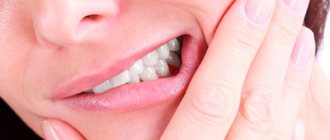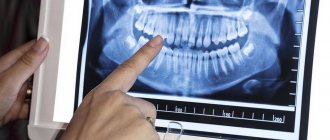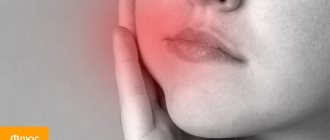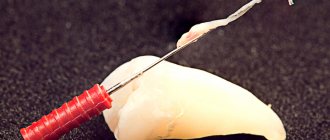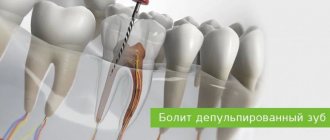We try to tell you about the most common problems so that they do not cause panic, but remind you: in any unclear situation you need to visit a dentist. When might dental treatment be needed? This is not only ordinary caries, but also unobvious troubles. For example, when a tooth ache under the crown, most likely there is a source of inflammation there and it is necessary to solve the problem as soon as possible.
Our dentistry is ready to help you with any symptoms. Just call and make an appointment and we will refer you to the right specialist. Why is dental treatment in Krasnoyarsk always in demand, despite constant recommendations from doctors and advice on oral care? This happens for various reasons: lack of time for quality home hygiene, weakened immunity, poor diet, bad habits, etc. The two main points that stand at the basis of lasting dental health are regular proper cleaning and scheduled examinations with a doctor every six months. Even if you missed something, forgot or damaged your teeth, the doctor will notice it in time and carry out the necessary dental treatment procedure in Krasnoyarsk.
During dental treatment and consultations, we again and again invite each person to preventive examinations every 6 months. Let this become your personal rule. Moreover, most often such a visit ends with positive emotions from the fact that everything is in order with the teeth. Well, if the doctor cures mild caries or does professional cleaning, the mood will be even better.
But let's return to the problems with crowns. How could it happen that the tooth under the crown is inflamed and hurts?
Why does a tooth hurt under a crown?
Sometimes after prosthetics, not only the “living” tooth hurts, but also the “dead”, pulpless tooth in which the nerve was removed. This may be due to inflammation of the periodontal tissues, resulting from a variety of reasons. The specialists of the YuliStom clinic have more than once had to deal with mistakes made by dentists in some clinics when installing crowns. They examine the patient, find out why the tooth hurts under the crown and eliminate the identified pathology. The most common mistakes made by dentists and patients are described below.
Pulpitis, periodontitis, periostitis
Inflammation of the pulp (the soft tissue of the tooth cavity and root canals) is a consequence of its incomplete removal in the process of preparation for prosthetics. If the tooth cavity has been opened, the infection in the mouth gets into it, so in most cases, before prosthetics, the pulp is removed - depulpation. Poor performance of this procedure leads to the development of infection and the appearance of a focus of inflammation, accompanied by severe pain, since the pulp is penetrated by nerve endings. Inflammation can also begin when the root canals are incompletely filled: infection develops in the unfilled areas.
Inflammatory process in tooth tissues
If the process is not stopped, the inflammation will spread to the periodontium - the ligament that holds the tooth in the cell. The pain intensifies and becomes pulsating. With purulent inflammation, a fistula may appear - pus begins to make its way to the surface of the gum. When the infection progresses further, the jaw tissue is affected, first the periosteum (periostitis or flux), and then the bone (osteomyelitis). Inflammation of soft tissues leads to the development of abscesses and phlegmons.
Perforation of channel walls
Sometimes during the process of cleaning the root canals or when installing a pin into a preserved root, a perforation of the root canal occurs. The infection enters the canal and causes inflammation. Aching pain and bad breath appear. May be complicated by periodontitis.
Perforation of the canal walls
Foreign body in the root canal
When cleaning dental root canals, the tip of a dental instrument occasionally breaks off. It remains in the root canal, injures its walls and prevents complete filling. In this case, the tooth first hurts when biting, and then the inflammatory process occurs and periodontitis develops with severe throbbing pain.
Periodontitis
Periodontitis is an inflammation of the periodontal tissues. The installation of a crown is rarely the cause of its development. More often this is a consequence of ignoring contraindications to prosthetics. Before installing a crown, periodontitis is treated and prosthetics are performed in the absence of an inflammatory process.
Cysts, granulomas
Cyst on the root of a tooth
With long-term chronic periodontitis, against the background of improper filling of the root canals, a small nodule can form in the area of the root apex, enclosed in a thin capsule, inside which immature connective tissue cells—granulations—grow. This is a granuloma; it can be asymptomatic for a long time, gradually increasing in size and turning into a cyst - a formation covered with a dense capsule, filled inside with inflammatory fluid.
It is impossible to detect an independent cyst or granuloma. Most often, these formations can only be seen on an x-ray.
Inflammatory processes in the granuloma and cyst can periodically become inflamed due to hypothermia, stress and other external influences. This is accompanied by pain, swelling of the gums and increased body temperature, and in the absence of adequate treatment will lead to the development of even more severe complications.
Odontogenic sinusitis
Odontogenic sinusitis
Inflammation of the maxillary sinus due to dental pathology, including after installation of an artificial crown (odontogenic sinusitis) is a consequence of untreated caries of the upper jaw, complicated by periodontitis. Another cause of sinusitis may be a perforation of the wall of the maxillary sinus during the treatment of the teeth of the upper jaw and entry into the cavity of infection.
Root crack or fracture
Tooth root fracture
Aching pain when biting can occur when a tooth root is cracked or fractured. The root is injured when the instrument presses too hard on the walls of the root canals during cleaning or filling. A crack or fracture may not appear immediately, but after a significant load on the tooth. A root fragment during a fracture can injure the periodontal tissues, which is often accompanied by infection and the development of purulent-inflammatory processes.
Incorrect crown installation
If the installed crown does not adhere tightly to the natural dental tissues in the cervical area, then an infection gets under it, which leads to the development of secondary caries and inflammation of the periodontal tissues. This is a mistake made by the orthopedic dentist. Swelling causes compression of nerve endings and pain even with a pulpless tooth.
Large load on the tooth
This may be due to:
- incorrect size of the prosthesis if it is higher than adjacent units; this is a consequence of an incorrectly taken impression or a defect in the installation of the structure;
- the patient constantly chewing nuts, seeds and other hard foods.
Poor oral hygiene
With improper or irregular oral care, colonies of bacteria are deposited on natural and artificial crowns, the acidity of the oral cavity changes, which negatively affects the condition of the prosthesis and contributes to the development of inflammatory processes in the periodontal tissues, accompanied by toothache.
Is it possible to carry out treatment without removing the crown?
In some cases, treatment eliminates the need to remove dentures. To do this, the dentist makes a hole in the crown itself, through which he carries out all the necessary procedures. After treatment is completed, the holes are filled, restoring the appearance of the crown.
If there is a pin and filling defects only in the upper third of the root canal, resection of the root apex is possible. The operation involves cutting off the apex from the root, removing pus and does not require much time. Its use eliminates the need to remove the crown and refill the canals, which will save money and time for the patient.
If you encounter problems after installing a crown, contact Good Hands Dentistry in Lyublino!
What to do if a tooth hurts under a crown
Severe toothache sometimes appears at the wrong time: at work or at night. In this case, there is no way to immediately contact a dentist. What to do if a tooth hurts under a crown, how to remove it and is it possible to do this? You can relieve pain using medications with analgesic properties or folk remedies.
Remember that it is necessary to temporarily relieve pain, but this does not cancel a visit to the doctor. In addition, you need to remember the maximum daily dose of the drug taken - it is indicated in the instructions for it.
Medications
Medicines from the group of non-steroidal anti-inflammatory drugs (NSAIDs) are very helpful. If you do not have diseases of the gastrointestinal tract (especially ulcerative processes in the gastrointestinal tract), then you can use one of the following remedies:
- Ketorol – 1 tablet 10 mg;
- Diclofenac – 1 rectal suppository 100 mg;
- Nurofen – 1 tablet 200 mg.
These agents suppress the action of biologically active substances that cause inflammation and pain, and also protect the gastrointestinal mucosa from any influences. They will relieve pain, but will cause an exacerbation of the ulcerative process in the gastrointestinal tract. Therefore, for people suffering from gastric ulcers, it is better to take nimesulide (trade name Nise) - 1 tablet of 100 mg. Nise belongs to the latest generation of NSAIDs and does not have a negative effect on the gastrointestinal tract.
Folk remedies
What to do when a tooth hurts under a crown, but you don’t have the necessary tablets at hand? It is worth turning to people's experience. Sometimes folk remedies help as well as drug therapy. Take:
- a piece of salted (but not smoked!) lard and place it on the gum next to the sore spot; salted lard will draw out fluid, eliminate swelling and pain; the effect occurs within 10 – 15 minutes;
- finely grate onion and garlic in equal volumes, mix the same amount of salt, place in a linen napkin and apply to the gum; will also quickly relieve pain, but will also destroy the infection;
- a teaspoon of baking soda per glass of boiled water and rinse every 15 minutes; baking soda will remove inflammatory products and bacteria, clean the cavity inside the prosthesis (if it has a gap) and soothe the pain.
Read more about how to safely and effectively relieve toothache before visiting the dentist in our article.
What not to do
There are things that you should not do when a tooth hurts under a crown. This:
- Any warming procedures will not soothe, but will increase pain, and will also significantly increase the risk of complications, since the cause of tooth pain under the crown can be a purulent-inflammatory process; when heated (compress, heating pad applied to the sore spot), the blood vessels dilate and pus can spread through them to other organs and systems;
- Self-administration of antibiotics - they will not relieve pain, but can cause side effects; Only a doctor can prescribe antibiotics;
- Lie without a pillow - the head should be elevated - this ensures the outflow of blood and reduces swelling;
- Attempting to cure a tooth on your own - only a dentist can help.
Tolerate or not pain in a tooth with a crown
Preliminary treatment before prosthetics is always accompanied by trauma to the periodontal tissues. Therefore, after installation of the prosthesis, injured tissues may hurt for some time. But this is not an intense pain that gradually subsides. Depending on the sensitivity of the patient, it can last from 1 to 7 days.
The cause of tooth pain under the crown may be completely different - it is an inflammatory process or an incorrectly installed prosthesis. The pain will be of a completely different nature. The characteristics of pain allow the dentist to assume the presence of a particular pathology.
Pain when pressed or bitten
When a tooth under the crown hurts when you press (bite), you should pay attention to other symptoms, such as swelling of the gums, discharge of pus from under the crown, bad breath, and increased body temperature. But sometimes, apart from pain when biting, nothing else bothers the patient.
- Possible reasons: most often the tooth under the crown hurts when pressed due to the inflammatory process in the area of the apex of the tooth root. An acute inflammatory process can be purulent in nature. In this case, pus may be released from under the crown (abscess at the root apex). With a long-term inflammatory process, a granuloma or cyst forms in this area. In the absence of signs of inflammation, pain when pressed indicates an incorrectly installed prosthesis. It may be slightly longer than adjacent natural crowns, which leads to increased stress and injury to the periodontal tissues.
- What is the best way to relieve pain: any drug from the NSAID group will do - Ibuprofen, Diclofenac, Ketonal, etc. But this is not a way out, but simply temporary self-help. To fix the problem, you need to urgently contact your dentist.
Pain under the crown from hot
With a properly installed denture, the tissues should not react to hot food. The pain under the dental crown from hot heat is acute and does not go away immediately. If you do not see a doctor in time, then over time it will become longer and more exhausting.
- Possible causes: pain under dental crowns from hot temperatures is a sign of pulpitis. It develops in a “living” tooth or in a pulpless tooth when the pulp is not completely removed.
- What is the best way to relieve pain: the pain with pulpitis is very strong, it is not so easy to calm it down, you need to urgently run to the dentist. Before leaving home, you need to rinse your mouth with a 2% soda solution and take a Ketorol tablet - this is the most effective pain reliever from the NSAID group.
Tooth pain from hot food
Pain under temporary crown
A temporary prosthesis is installed during the production of a permanent one in order to protect the prepared tooth from injury. They are made from plastic or metal-plastic. Sometimes wearing a temporary prosthesis is accompanied by aching pain. Painful sensations may be accompanied by swelling and redness of the gums.
- Possible reasons: temporary structures made from cheap materials do not always adhere tightly to natural dental tissues, so infection can get underneath them and secondary caries can develop. Acrylic dentures often cause allergies and have a toxic effect on tissue.
- What is the best way to relieve pain: treat the oral cavity with an infusion of chamomile or calendula (a tablespoon of raw material per glass of boiling water), take any NSAID tablet and an antihistamine (Zodak, Erius, Claritin) and visit a doctor; the denture may have to be replaced.
The tooth under the crown hurts and the gums/cheek are swollen
First, a small convex formation appears above the installed structure. If left untreated, the swelling increases and spreads to the entire affected half of the face, accompanied by severe pain.
- Possible reasons: if the tooth under the crown hurts and the cheek is swollen, this is a sign of periostitis (flux) - inflammation of the periosteum of the jaw bone. The reason is poor quality treatment before prosthetics.
- What is the best way to relieve pain: rinse with any antiseptic, take NSAIDs and antihistamines, immediately consult a dentist.
A tooth without a nerve hurts under the crown
After installation of the prosthesis, pain may appear in the “dead” pulpless unit. If a tooth hurts, but the intensity of the pain gradually decreases, then there is no need to worry - this is normal. Sometimes the pain does not appear immediately, but after a while its intensity increases and takes on a pulsating character. Patients are often perplexed: why does the tooth under the crown hurt if its nerve has been removed?
- Possible causes: moderate pain that appears immediately after prosthetics - this is usually the result of trauma to the periodontal tissues. They last for several days and go away on their own. A “dead” tooth hurts under the crown also when depulpation was performed poorly, when particles of pulp remained in the dental cavity or root canals, they became infected and pulpitis or periodontitis developed.
- What is the best way to relieve pain: minor pain after prosthetics does not require pain relief. The mouth can be rinsed with a 2% soda solution or an infusion of herbs with antiseptic properties (sage, calendula). If there is severe, growing throbbing pain, you can temporarily remove it by taking a Diclofenac or Nise tablet and contact your dentist.
It's a dull pain
An exhausting, aching pain syndrome may appear immediately or some time after prosthetics.
- Possible reasons: this is typical for various pathologies in the area of the apex of the tooth root - granulomas, cysts and abscesses. They are a consequence of defects in cleaning and filling of root canals. An acute or chronic inflammatory process develops, accompanied by aching, wave-like pain.
- What is the best way to relieve pain: it is difficult to independently relieve tooth pain under the crown if it is intensely aching, but to alleviate the condition before visiting the dentist, you can take any medicine from the NSAID group.
What will the dentist do if the gums become inflamed after installing a crown?
First of all, the doctor will order an X-ray to determine the cause of inflammation of the gums under the crown. Treatment by the dentist will also be selected based on this information.
Most often in these cases it is necessary to remove the crown. Additionally, patients are prescribed anti-inflammatory treatment and antibiotics. It is possible to re-prosthetize a tooth after the gums have become inflamed only when the anti-inflammatory treatment has ended. And only then will a new crown be installed.
It is important to understand that folk remedies will not be effective in this case and will not replace seeing a doctor. If you realize that discomfort continues for more than three days, be sure to consult a doctor. Inflammation is a serious process that affects the body as a whole, so it is important to recognize the cause as early as possible and determine effective treatments for inflammation.
When you need to see a doctor urgently
Urgent medical attention is necessary if tooth pain under the crown is accompanied by the following symptoms:
- sore, swollen, reddened gums are a sign of inflammation of the periodontal tissues; It is better not to start this process, it can spread, causing various complications;
- increase in body temperature - a slight increase indicates the presence of an infectious-inflammatory process in the tissues; if a high fever appears, then most likely the process has acquired a purulent character; it is very dangerous;
- facial asymmetry - may be a consequence of tissue swelling with severe inflammation of soft tissues after prosthetics; it also occurs with injury or inflammation of the facial nerve associated with various dental procedures; If not treated promptly, facial asymmetry related to the facial nerve can last a lifetime.
Prosthetics with crowns
Installing a crown on a tooth is a procedure to restore its anatomical shape, color, chewing function and aesthetics.
In practice, any tooth under a crown (with or without a preserved nerve) can begin to hurt. In this case, only a specialist can provide assistance. Lack of professional treatment or late contact with a doctor aggravates the situation; removal of the causative tooth may be necessary.
After professionally performed prosthetics, pain should not occur. At first, you may experience some discomfort associated with getting used to the new product in your mouth. If you have a crown installed and your tooth hurts, you should immediately tell your doctor about it.
How to treat a tooth with a crown
When the nerve under the crown of a tooth hurts, treatment is carried out differently depending on the clinical situation and X-ray data. Today, treatment is increasingly carried out through a drilled hole in the prosthesis. But sometimes the crown should be removed and only then the necessary treatment should be carried out. Mandatory removal of the structure is required when:
- rapidly developing deep caries, complicated by pulpitis and periodontitis;
- incorrectly installed crown or its destruction;
- allergies to prosthetic material;
- abscess, cyst in the area of the apex of the tooth root.
After treatment, the orthopedic structure is reinstalled. This can be an old crown (if it is completely preserved) or a new one (if the tooth has acquired a different shape after treatment). After treatment, the hole in the crown is sealed with a light-curing filling material.
Removing a crown for tooth treatment
"Living" tooth
This is a unit with no pulp removed. Most often, it performs a supporting function in a bridge prosthesis. If for some reason secondary caries develops in it, the artificial structure is removed under local anesthesia or a hole is drilled in it. The tooth cavity is opened, the pulp is removed, the root canals are cleaned and a complete filling is performed. After this, a crown is installed or the hole made through which the treatment was performed is repaired.
With the nerve removed
A pulpless tooth does not have a nerve (pulp). Pain is associated with problems in the area of the tooth root. To determine the cause of the pain, x-rays are performed. Treatment can take place both with the crown removed and through a drilled hole. The root canals are cleaned, foreign bodies and excess cement are removed. Treat or remove abscesses, cysts, granulomas. Then re-prosthetics or restoration of the integrity of the crown is carried out using photo-curing materials.
Clinical manifestations
Most often, patients note that the tooth under the crown hurts when pressed. Painful symptoms are especially evident when eating or when pressing on the prosthesis with the tongue. As inflammatory processes develop, pain symptoms become constant and do not require mechanical action for their manifestation. It can be bursting, aching or pulsating, often acute and intense. Depending on the neglect of the process and the reasons for its occurrence, pain is accompanied by the following clinical manifestations:
- Swelling of the gums or cheeks indicates inflammatory processes developing near the apex of the tooth root. As a rule, it appears on the gum in the projection of the affected root;
- A fistula opening on the gum tissue is formed due to lack of treatment after swelling of the gums. Pus flows through it, which forms at the apex of the tooth root;
- Cyst - develops during advanced inflammatory processes at the root tips. It is a cavity enclosed in fibrous tissue, which contains pus.
Any of the above symptoms is a reason to contact a dental clinic, where the patient will take an x-ray, make an accurate diagnosis and select the appropriate treatment.
Prevention
To avoid complications during prosthetics and associated pain, the patient should:
- follow all doctor’s recommendations for caring for the oral cavity and dentures;
- Carry out professional cleaning of all dental units twice a year;
- do not try to crack nuts on the prosthetic side;
- carefully choose a clinic for prosthetics; Experienced specialists in most cases manage to avoid complications when installing a variety of types of dentures; patients of the YuliStom clinic do not experience severe pain after prosthetics; The schedule of specialists can be found on our website.
Causes of pain
There are quite a few reasons why a tooth hurts under the crown, these include:
- Pulpitis is inflammation of the neurovascular bundle inside the tooth. The main cause of the pathology is infection in the root canal system, injury to the pulp. The disease can also occur when teeth are covered with a crown without removing the nerve. Pulpitis manifests itself as acute spontaneous pain, which over time may subside or become aching.
- Periodontitis is an inflammation of the periodontal tissues that surround the root of the tooth. The disease manifests itself when infection enters the periodontal space from the root canals. A common cause of pathology is poor-quality treatment or filling of canals. With periodontitis, the tooth hurts under the crown when pressing, eating, or applying pressure.
- Periostitis is an inflammation of the periosteum - the periosteum that surrounds the jaw bone. The disease occurs due to the spread of infection from surrounding tissues, often from poorly treated root canals. If the tooth under the crown hurts, the gums are swollen, or facial asymmetry appears, this indicates periostitis.
- Periodontitis is an inflammation of the gums, the circular ligament of the tooth and the tissues that surround and hold the tooth in the jaw. The disease can occur in the presence of somatic diseases of the body or an incorrectly installed tooth crown. Symptoms of periodontitis include bleeding gums, tooth mobility, pain, and bone destruction.
- Exacerbation of a chronic disease - cysts, granulomas . Decreased immunity can cause exacerbation of chronic inflammatory processes in teeth that are covered with crowns. Patients report acute pain in the tooth, swelling and redness of the gums.
- Sinusitis is inflammation of the mucous membrane of the maxillary sinus (maxillary sinus). The disease occurs due to infection in the sinus, disruption of the outflow of exudate, as well as from poorly treated maxillary molars (odontogenic sinusitis).
Other reasons why a “dead” tooth under a crown hurts include poor-quality canal treatment, the presence of nerve residues in the tooth, breakage of instruments in the canal, and the presence of inflammatory processes in periodontal tissues.
Gum pain
If the gums hurt, and not the tooth itself with a crown installed, there may be a deformation of the crown or a discrepancy in its size - the gums are mechanically damaged, which leads to inflammation and pain. For example, the edge of the crown extends under the gum or, on the contrary, does not reach its edge significantly - in the first case, a sharp edge can lead to soft tissue injury and inflammation. Moreover, it is worth noting that the pain can radiate into the tooth itself, which makes self-diagnosis difficult - the patient simply does not understand that it is the gums that hurt, and not the tooth under the crown.
If the crown does not reach the edge of the gum, the tooth under the crown hurts greatly - but not immediately after installation, but after quite a long time. The retention of food debris between the edge of the structure and the gum leads to the proliferation of pathogenic bacteria, the development of caries, and the destruction of tooth tissue under the crown. This leads to severe pain, tooth reactions to temperature, stress, etc.
The doctor’s tactics in this case is to remove the unsuitable crown; this is the only measure that a specialist can take to eliminate the problem.
If the gums are swollen, and even more so in cases where there is swelling of the cheek, there is most likely inflammation in the area of the apex of the tooth root. As a rule, swelling forms in the projection of the apex of the root of the causative tooth. You cannot do without a visit to a dentist - he will decide on the choice of treatment method taking into account the condition, structural features of the dental system, and the severity of the disease.
A fistula on the gum often forms a certain time after the appearance of swelling. This happens because the pus accumulated at the apex of the root requires release - after its outflow is established, the symptoms may subside, but this does not mean that the disease has passed. In this case, a visit to the doctor is mandatory - it is important to treat the disease and prevent possible complications.
What to do at home?
If a tooth with a crown hurts, then you need to quickly visit a specialist - a dentist. Before visiting a doctor, you can take the following measures:
- Take a pain reliever. It is better to use medications from the group of non-steroidal anti-inflammatory drugs - Paracetamol, Nimesil, Ibuprofen, Tempalgin, Ketanov;
- Carefully carry out hygienic cleaning of teeth and interdental spaces;
- Rinse the mouth with decoctions of medicinal herbs;
- Rinse with a salt-soda solution every 1-2 hours. To prepare the solution, you need to dissolve 1 teaspoon of salt and soda in 200 ml of boiled, slightly cooled water.
How does the withdrawal take place?
The procedure for removing a dental crown can be done in different ways. The most common of them is using the Koch apparatus. This device is placed in the patient's mouth, and by applying pressure to the edge of the crown, the crown is “displaced” without pain or damage. This method is often used when the patient wants to keep the dental crown intact. If the integrity of the crown is not so important, you can remove the crown by simply sawing it. This method often frightens patients, since the preparation process is quite complicated. During filing, ultrasound is applied to the tooth, causing the material to crack, allowing the tooth to be freed. Sawing severely damages the structure, so installing the same crown will not be possible.
You can carefully remove the crown using the Coronaflex device. The orthopedic design completely retains its shape, so it can be reinstalled.
